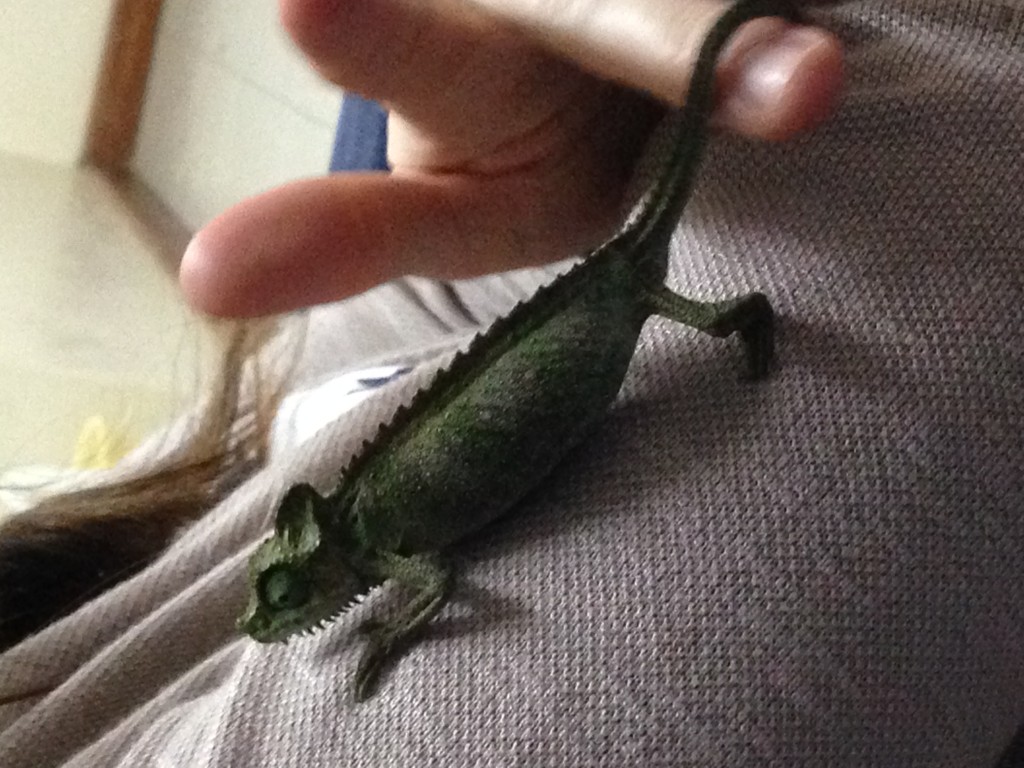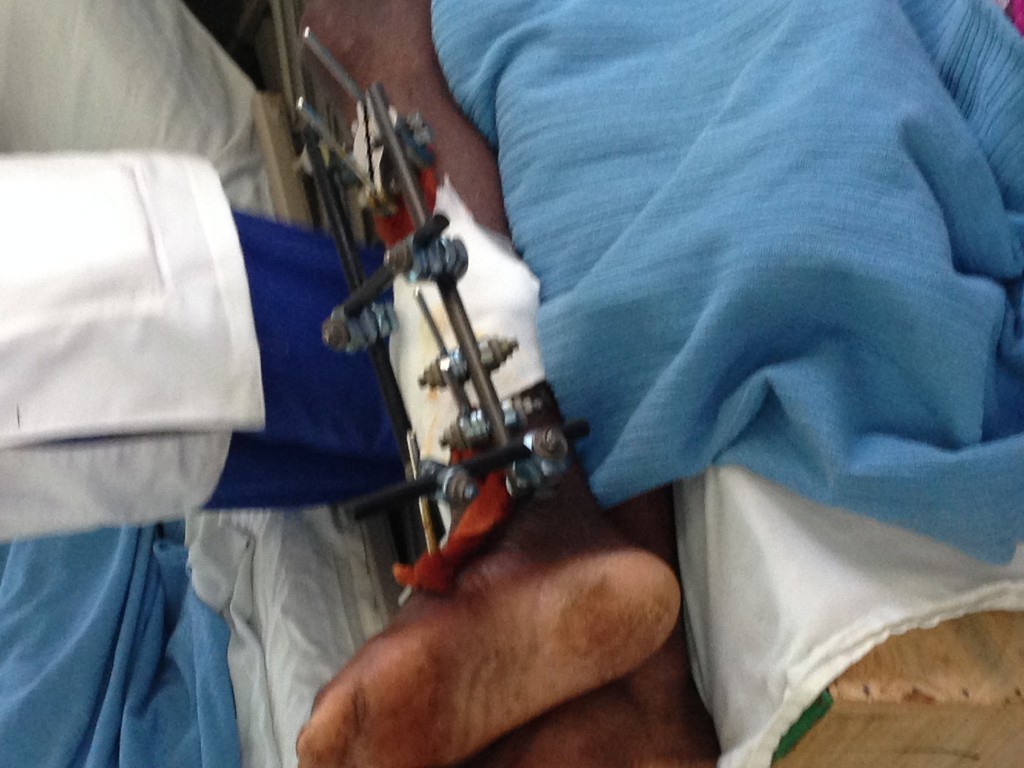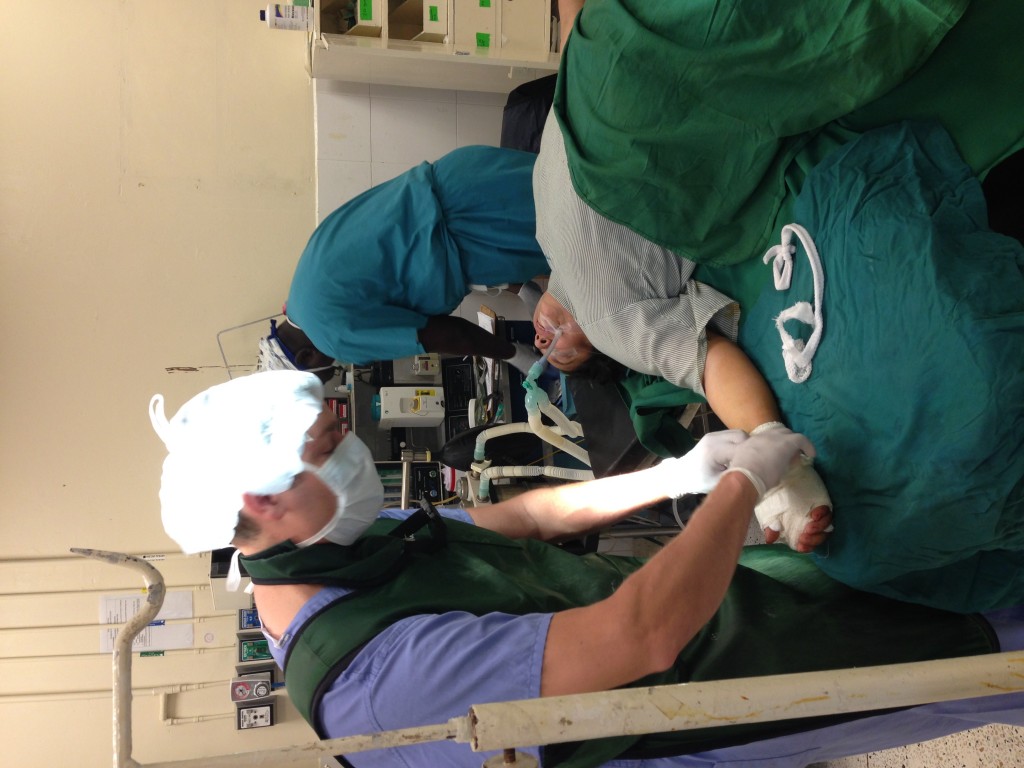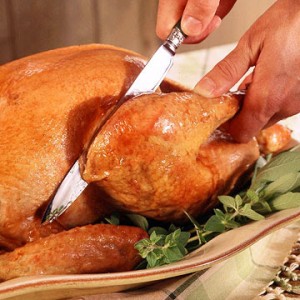A busy ski resort in the United States may see dozens of injuries on the slopes each day.
As an orthopedic surgeon, I also see many patients with ski-related injuries throughout the season. Most injuries are the result of poor conditioning, or equipment failure.

Common Ski Injuries
The most common injuries amongst downhill skiers are knee sprains, shoulder injuries, head/face injuries and wrist/thumb injuries. The knee is the most commonly injured joint, resulting in about one third of all ski injuries. Injury rates and type vary with uncontrollable factors such as weather and snow conditions. Proper equipment and conditioning, however, are factors that we can control.
Equipment
When skiers examine their equipment, it’s important to make sure that:
- Skis, poles, and boots are in good condition and properly sized for the individual’s weight, size and skill.
- Binding are adjusted and tested prior to each ski season.
- Helmets are properly fitted and checked for damage prior to the ski season.
- Sunglasses, goggles and sunscreen are part of one’s safety equipment.
Conditioning
Skiers can increase their safety and performance this winter by starting with a pre-conditioning program that includes four components: endurance, strength, flexibility, and balance. Aerobic fitness is the key to preventing the end of the day injuries (the last run).
Cross training, which includes multiple sports and activities in the conditioning regimen, has become popular, especially with a seasonal sport such as skiing. Strength and flexibility focusing on the legs and trunk are vital in injury prevention specific for skiing. Balance training has been shown to be the single most important exercise for preventing ACL tears in women.
A typical conditioning program can include:
1. Aerobic fitness (5 days/week for at least 30 minutes)
- Running
- Cycling
- Swimming
- Elliptical or stair climber
- Jumping rope
- Treadmill
2. Strength (3 days/week, 2 sets of 60 seconds each)
- Leg press
- Wall squats
- Hamstring curls
- Toe raises
- Lateral leg raises
- Sit-ups
3. Flexibility (daily, 2 sets of 60 seconds each)
- Hamstring stretches
- Achilles stretches
- Quad stretches
4. Balance Exercises (daily, 2 sets of 60 seconds)
- Standing on one leg, perform mini squats
- Single leg hop, holding for five (5) seconds, repeat
In addition to a conditioning program, skiers need to adequately warm up – an activity that is often neglected with skiing. No one would think of running out on the football field or onto the basketball court without warming up first.
But with skiing, one typically sits in the car for an hour or more to get to the slopes, and then stands in line for tickets and for the lift, before finally sitting on the chair for several minutes. By the time one has arrived on the top of the hill, he or she is often stiff and cold.
It’s important for skiers to remember to warm up and stretch before starting down the hill. Often an easy, predictable run is a good idea before heading to the more challenging terrain. The few minutes spent warming up will be well worthwhile in injury prevention.
More about Knee Injuries
Every ski season, I treat many knee injuries. In the 1970′s, ankle injuries were more common, resulting from soft, leather boots. The development of stiffer boots has transferred much of the force to the knee.
Medial Collateral Ligament
The most common knee injury from skiing is the MCL (medial collateral ligament) injury. It often results from catching an edge or having the skis diverge, so that the foot is forced away from the body. This creates a distraction force on the inside of the knee.
Fortunately, the MCL has a good blood supply, and can be treated non-operatively, with a period of bracing for 4-8 weeks, depending on the severity of the injury.
Anterior Cruciate Ligament
ACL (anterior cruciate ligament) injuries are also common skiing injuries. They are thought to occur from the forces created by the long lever arm of the ski that are transmitted to the knee ligaments. Commonly, the ACL is injured with a hyperextension mechanism.
In expert skiers, we see ACL injuries when saving a backwards fall by a strong quadriceps contraction, pulling the tibia (lower leg) forward with enough force to rupture the ACL.
Recent boot and binding technology has reduced the rate of ACL injuries. In young, active individuals, the ACL injuries often require surgical reconstruction. Success rates from surgery are excellent, but require aggressive rehabilitation and six months of recovery time before one can return to skiing or other twisting or pivoting sports.
No one wants to go down the path of surgery and recovery. But too many people wait to think about preparing for skiing until half way through the season, when snow has already accumulated and they are on their way to the top of the mountain. Many times, this is too late.
Although injury is a risk we all take when participating in any sport, a conscientious approach to skiing – including equipment inspection and conditioning – will minimize the occurrence. Not only will these precautions reduce injury rate, but they will also enhance performance, decrease fatigue, and ultimately, increase one’s enjoyment of the sport.
If you believe you are suffering from a knee-related injury and need specialized orthopedic care, the surgeons at Orthopedic Specialists of Seattle provide excellent treatment options available for you.







 Thanksgiving is just around the corner and almost everyone is planning a big feast, strategizing for the family football rematch, watching the Macy’s Day parade and of course, NFL football on TV.
Thanksgiving is just around the corner and almost everyone is planning a big feast, strategizing for the family football rematch, watching the Macy’s Day parade and of course, NFL football on TV. 